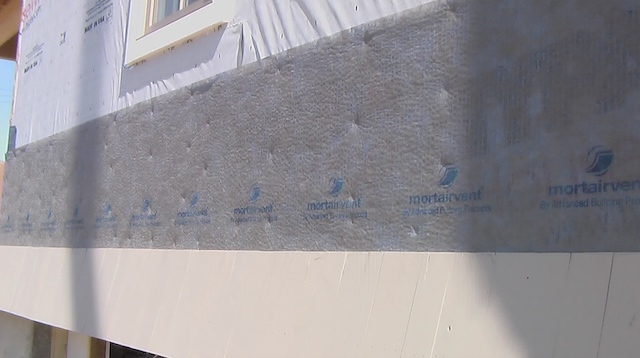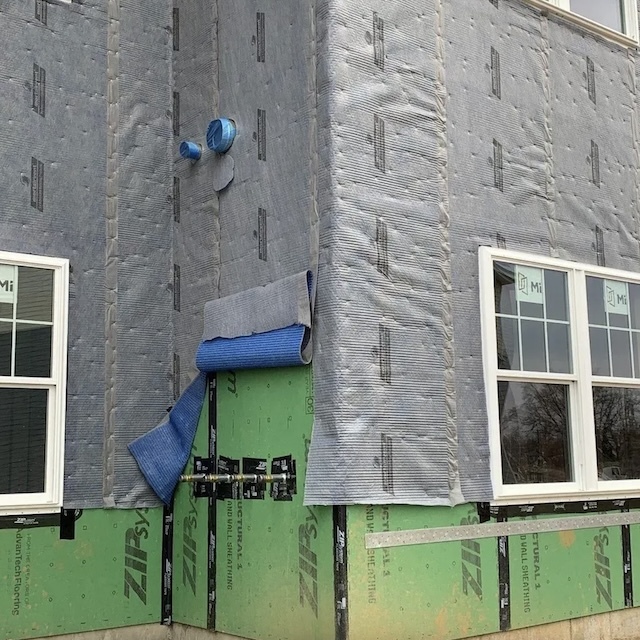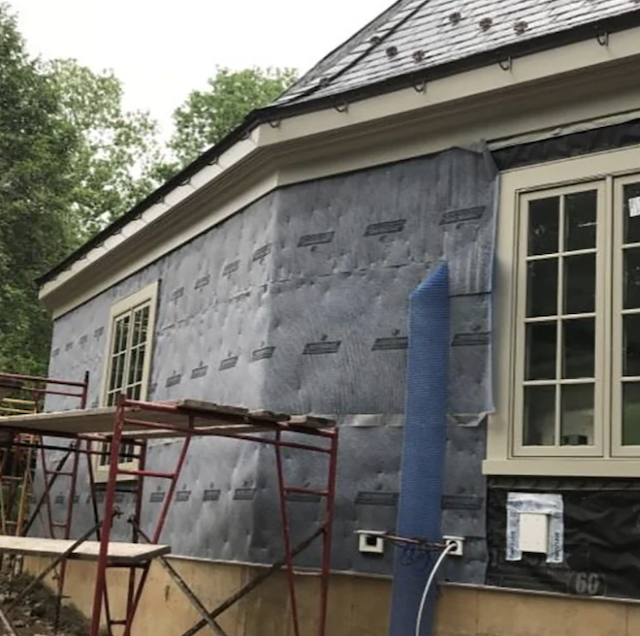Posted by Spycor Building on Mar 31st 2025

Rainscreen systems have become integral to modern architecture, offering enhanced protection against the elements, improved energy efficiency, and aesthetic versatility. Whether for commercial skyscrapers or cozy residential homes, selecting the appropriate rainscreen system is crucial for the building's longevity and performance. This comprehensive guide delves into the top rainscreen systems suitable for both commercial and residential buildings, highlighting their benefits, design considerations, and maintenance tips.
Understanding Rainscreen Systems
A rainscreen system is an exterior cladding infrastructure designed to shield buildings from moisture intrusion while promoting ventilation. It typically consists of an outer cladding layer, an air cavity, a weather-resistant barrier, and the structural wall. This configuration allows any infiltrating moisture to drain or evaporate, thereby protecting the building envelope from potential damage.
Benefits of Rainscreen Systems
-
Moisture Management: By creating a ventilated space behind the cladding, rainscreens effectively prevent moisture accumulation, reducing risks like mold growth and structural deterioration.
-
Energy Efficiency: The air cavity acts as an insulating layer, enhancing the building's thermal performance and potentially lowering heating and cooling costs.
-
Durability: Protecting the structural wall from direct exposure to weather elements extends the building's lifespan and reduces maintenance needs.
-
Aesthetic Flexibility: Rainscreens accommodate various cladding materials—such as metal, wood, or fiber cement—offering diverse design possibilities to architects and builders.

Top Rainscreen Systems for Commercial Buildings
Commercial structures often face stringent performance requirements due to their scale and usage. The following rainscreen systems are particularly suited for such applications:
-
Pressure-Equalized Rainscreen (PER) Systems
PER systems are engineered to balance external wind pressures with internal cavity pressures, minimizing water penetration. This is achieved through strategic venting, allowing the system to "equalize" rapidly during wind events. Such systems are ideal for high-rise buildings where wind-driven rain is a significant concern.
-
Drained and Back-Ventilated (DBV) Systems
DBV systems feature an air cavity that facilitates both drainage and ventilation. Any moisture that breaches the outer cladding drains away, while the airflow aids in drying residual moisture. These systems are versatile and suitable for various commercial applications, offering a balance between performance and cost-effectiveness.
-
Metal Composite Material (MCM) Rainscreens
MCM panels, composed of metal skins bonded to a lightweight core, provide a sleek and modern facade. They are durable, lightweight, and can be fabricated into various shapes and sizes, making them popular in contemporary commercial architecture.
-
Terra-Cotta Rainscreens
Terra-cotta cladding offers a unique aesthetic appeal with its natural texture and color variations. Beyond aesthetics, terra-cotta is durable, fire-resistant, and contributes to the building's thermal performance. It's a preferred choice for projects aiming for a timeless and elegant look

Top Rainscreen Systems for Residential Buildings
Residential buildings benefit from rainscreen systems that enhance comfort, energy efficiency, and curb appeal. The following systems are particularly advantageous:
-
Fiber Cement Rainscreens
Fiber cement panels are renowned for their durability, resistance to rot and pests, and minimal maintenance requirements. These rainscreens are highly versatile, offering a variety of finishes that can mimic the appearance of wood or stucco, providing homeowners with aesthetic flexibility without compromising on performance. Fiber cement is also fire-resistant, making it a popular choice for areas prone to wildfires. With its long-lasting durability, it ensures that homes stay protected while maintaining their visual appeal for many years
-
Wood Rainscreens
For those desiring a natural and warm facade, wood rainscreens are an excellent choice. When properly treated and installed, wood cladding can offer longevity and charm, creating an inviting atmosphere for any residential project. Species like cedar and redwood are especially favored due to their natural resistance to decay and pests. Additionally, wood provides exceptional thermal insulation, improving the home’s energy efficiency. With various wood finishes and stains, homeowners can customize their rainscreen to align perfectly with the home’s architectural style.
-
High-Pressure Laminate (HPL) Rainscreens
HPL panels are crafted from resin-impregnated kraft paper, offering a durable and versatile cladding option. These rainscreens come in an array of colors, finishes, and textures, allowing homeowners to achieve a unique and customized look that aligns with their aesthetic preferences. HPL is also highly resistant to weathering and UV radiation, ensuring that the rainscreen maintains its appearance and functionality even in harsh climates. Additionally, HPL panels are low-maintenance, making them an ideal choice for homeowners seeking both beauty and durability with minimal upkeep.
-
Vinyl Rainscreens
Vinyl cladding is a cost-effective and low-maintenance option for residential applications. Advancements in manufacturing have led to more aesthetically pleasing designs, with improved durability and insulation properties. Vinyl rainscreens are available in various colors and textures, offering a wide range of design options to suit different home styles. Furthermore, vinyl is resistant to fading, cracking, and warping, making it a durable choice for homes in a variety of climates. Its ease of installation and upkeep make it particularly attractive for budget-conscious homeowners who want an effective rainscreen system without a hefty price tag.
Design Considerations for Architects
Architects play a pivotal role in the successful implementation of rainscreen systems. Key considerations include:
-
Climate Analysis
Understanding the local climate is crucial when selecting a rainscreen system. Different climates may require unique approaches to moisture management and ventilation. For instance, in humid or wet regions, choosing materials and designs that promote enhanced ventilation and moisture control is essential to prevent the buildup of mold or mildew. Conversely, in dry climates, ensuring that the rainscreen system minimizes water loss or damage becomes more of a concern. Tailoring the design to the climate ensures that the rainscreen system can effectively protect the building from the elements while maintaining optimal performance throughout its lifespan.
-
Material Compatibility
Material compatibility is another critical factor in the design process. Rainscreen systems often consist of multiple layers, such as cladding, insulation, and protective barriers. Ensuring that all materials work harmoniously together prevents issues like galvanic corrosion, which can occur when dissimilar metals are in contact, or differential movement between materials that could lead to cracks, warping, or other structural issues. Thoroughly assessing the compatibility of all components within the rainscreen system ensures both long-term durability and functionality, avoiding unnecessary repairs or maintenance down the line.
-
Thermal Performance
Thermal performance is a key consideration in any modern building design, and rainscreen systems offer an effective means of enhancing energy efficiency. By incorporating continuous insulation within the rainscreen assembly, architects can significantly reduce heat transfer through the building’s exterior, improving both its heating and cooling efficiency. This helps align the building with modern sustainability goals, potentially reducing energy consumption and operational costs over time. In addition to boosting energy efficiency, the integration of thermal insulation can contribute to creating a more comfortable indoor environment for occupants.
-
Fire Resistance
Fire resistance is especially important in the design of rainscreen systems, particularly for multi-story buildings or structures located in areas prone to wildfires. Architects must select non-combustible materials for the rainscreen and ensure that the system adheres to local fire safety standards. This may involve choosing materials such as metal, fiber cement, or certain types of stone, which offer superior fire resistance compared to wood or vinyl. Additionally, incorporating fire-resistant insulation and designing the rainscreen to prevent the spread of flames can help improve the building’s overall fire safety rating, protecting both the structure and its occupants.
-
Aesthetic Integration
The aesthetic integration of the rainscreen system with the overall design of the building is a critical consideration for architects. Rainscreens not only protect the structure but also contribute to its visual appeal. With an array of materials, colors, and finishes available—from sleek metal cladding to warm wood textures—architects can create a striking visual effect that complements the building’s architectural style. Whether aiming for a modern, minimalist look or a more traditional, natural appearance, the rainscreen system can be tailored to enhance the building’s exterior. The integration of aesthetic elements must be balanced with functionality to ensure that the rainscreen system performs optimally without compromising the desired visual impact.
Explore the best options tailored for both commercial and residential buildings, and find the perfect rainscreen to protect your investment. Discover premium materials, top-rated performance, and long-lasting durability.
Click Here to check the Top Rainscreen Systems for Your Project!


